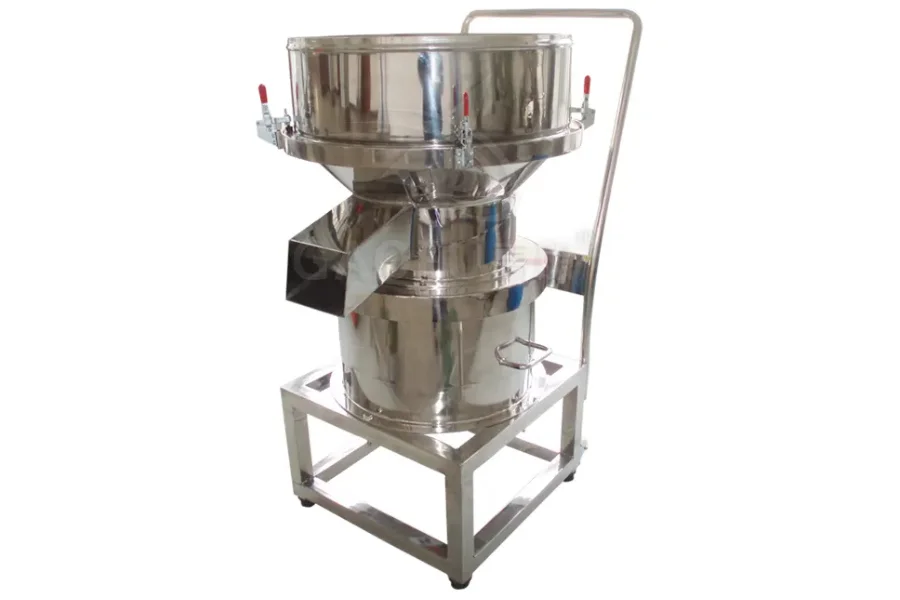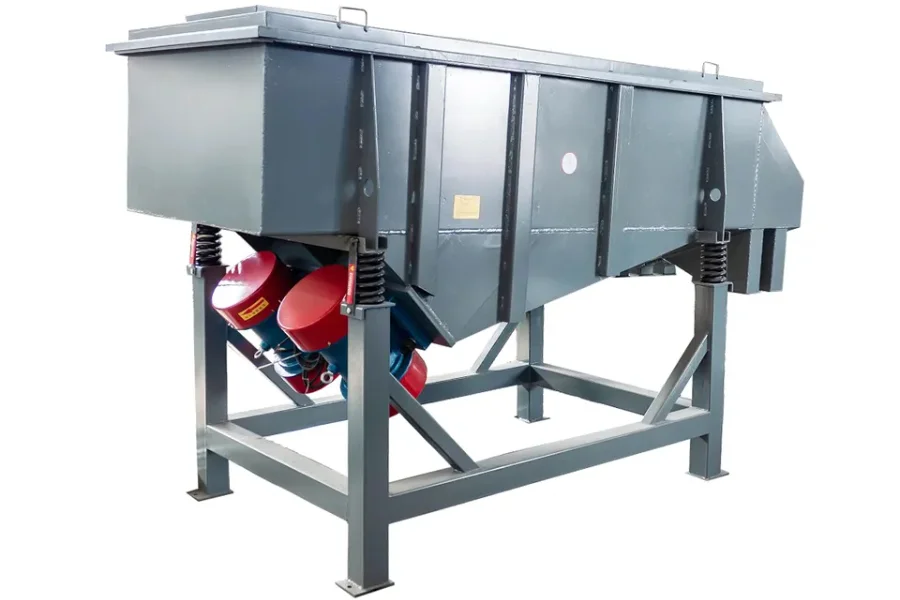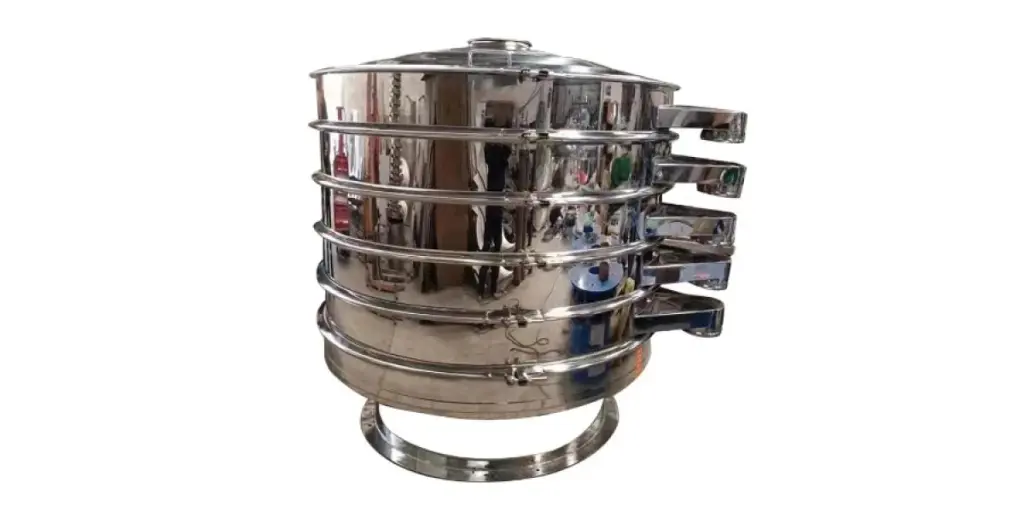Powder sieving machines have become essential for industries that rely on accurate particle separation. They offer numerous benefits, making them valuable pharmaceuticals, food processing, and chemical manufacturing tools. One advantage is their ability to enhance efficiency by quickly and precisely sorting particles of different sizes, leading to better product uniformity and reduced waste.
This comprehensive guide will explore key considerations and provide valuable insights to help you navigate the market and choose the perfect powder sieving machine that suits your business needs.
Table of Contents
Overview of the powder sieving machines market
Types of powder sieving machines
A guide to buying powder sieving machines
Final thoughts
Overview of the powder sieving machines market

The powder sieving machines market has experienced significant growth in recent years due to the increasing demand for efficient particle separation in various industries. This is a major reason for the high demand in pharmaceuticals, food processing, and chemical manufacturing industries. These industries require precise particle size distribution and strict quality control measures, making powder sieving machines essential.
Additionally, there is a growing emphasis on product safety and purity, leading to the adoption of powder sieving machines to effectively remove contaminants and foreign materials.
Regions like North America, Europe, and the Asia Pacific are witnessing substantial demand for these machines, as they have thriving industrial sectors and a strong focus on technological advancements.
Types of powder sieving machines
1. Vibrating sieve machine

A vibrating sieve machine utilizes vibrations to facilitate powder passage through a sieve mesh. The machine effectively separates particles based on size and shape by employing a motor to generate vibrations. Vibrating sieve machines are widely employed in diverse industries owing to their remarkable efficiency and accuracy in particle separation.
2. Rotary sieve machine

Rotary sieve machines employ a rotating cylindrical screen to separate particles based on size. When the powder enters the machine, it travels along the rotating screen, allowing particles of different sizes to be sorted accordingly. This type of sieving machine is highly advantageous for large-volume applications, as it can efficiently handle various materials.
3. Centrifugal sieve machine

The centrifugal sieve machine harnesses centrifugal force for particle separation. This machine introduces the powder into a rotating basket or drum. As the basket spins, the centrifugal force drives particles of varying sizes toward the outer edges while smaller particles pass through the sieve. This particular sieving machine is especially suitable for handling fine powders and delicate materials, as it provides a gentle separation process.
4. Tumbler sieve machine

A tumbler sieve machine loads the powder into a cylindrical drum, then rotates and tumbles the particles inside. As a result of this tumbling action, the particles are effectively separated based on their size and shape. Tumbler sieve machines are favored for their gentle sieving capabilities, making them ideal for precisely handling fine and delicate materials.
A guide to buying powder sieving machines
1. Cost
Assess your budget and seek powder sieving machines that provide optimal value for your investment. Don’t just look at the initial cost but also the long-term operational expenses, such as maintenance and energy consumption. Considering these factors, you can make a well-informed decision that balances affordability with the machine’s quality and efficiency. The cost of powder sieving machines can range from US$ 2,000 to US$ 10,000, depending on the machine’s capacity, features, and overall build quality.
2. Capacity
Opt for a powder sieving machine that appropriately handles the desired powder volume. Consider the current production needs and anticipate future growth to ensure the machine can accommodate increasing demands. A machine with a suitable capacity ensures smooth and efficient operation without the risk of overloading or compromising productivity. The average capacity range of powder sieving machines varies from 100 kg/hr to 5000 kg/hr, allowing for a wide range of production volumes depending on the specific machine model and manufacturer.
3. Particles sizes range
You have to look for a powder sieving machine that offers adjustable sieve sizes, allowing for a specific size range of particles. This flexibility ensures that the machine can effectively handle particles of various sizes, providing accurate and precise separation. Powder sieving machines have a particle size range from 10 microns to 5 millimeters, offering versatility to cater to a wide array of particle sizes.
4. Compatibility
Before making a purchase, assess the compatibility of the powder sieving machine with the existing production line or equipment. Ensure that the machine seamlessly integrates into the workflow without causing disruptions or requiring extensive modifications. A compatible machine will align smoothly with operations, allowing efficient and uninterrupted production. Considering compatibility saves time and resources, ensuring a hassle-free integration of the powder sieving machine into the existing setup.
5. Durability
Look for a powder sieving machine that is sturdy and dependable, capable of enduring continuous use in the industry. Pay attention to the construction materials and components to ensure high quality, contributing to the machine’s longevity. Powder sieving machines have a lifespan of around 5 to 10 years, depending on maintenance, operating conditions, and usage level.
6. Safety features
The best powder sieving machine has essential safety features to mitigate potential risks. These features may include emergency stop buttons, protective covers, and secure enclosures. The emergency stop button allows for immediate cessation of machine operation in case of any hazards or emergencies. Protective covers protect operators from moving parts or flying particles during operation. Secure enclosures provide an added layer of protection by preventing unauthorized access to the machine.
7. Applicable material
Different powder sieving machines are designed to handle specific materials, such as fine powders, granules, or coarse particles. Ensure that your chosen machine is suitable for specific material requirements. Some common materials that can be sieved using these machines include pharmaceutical powders, food ingredients, chemical compounds, minerals, plastic pellets, and even abrasive materials like sand or ceramics.
Final thoughts
Powder sieving machines play an important role in a range of industries, and businesses can use this as an opportunity to supply machines to this expanding market. Thoroughly evaluating factors like cost, capacity, particle size range, compatibility, durability, safety features, and applicable materials can help businesses ensure they purchase the right powder sieves for their respective clients’ needs. To explore a diverse range of powder sieving machines from trusted manufacturers, visit Alibaba.com.




